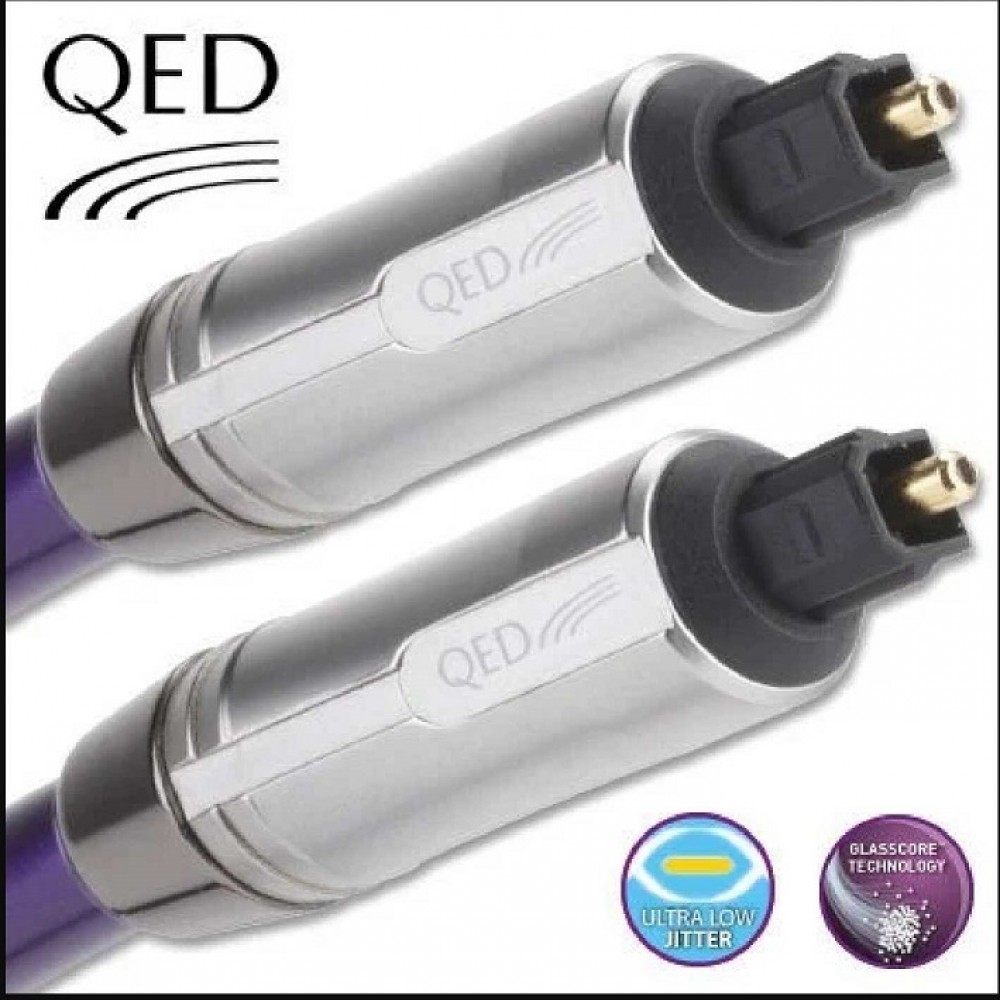QED QE-3310 REFERENCE OPTICAL QUARTZ KABLO 1 mt.
QED QE-3310 REFERENCE OPTICAL QUARTZ KABLO 1 mt.

QED QE-3310 REFERENCE OPTICAL QUARTZ 1 mt. KABLO
QED SUPERIOR TOSLINK OPTİK DİJİTAL SES BAĞLANTI KABLOSU GERÇEK CAM İLE YAPILDI
Referans Optik Kuvars, 210 ayrı boro-silikat cam elyafından oluşan, türünün ilk örneğidir. Kablo, DAC'leri, TV'leri, CD çalarları ve Blu-Ray oynatıcıları amplifikatörlere veya alıcılara bağlarken ayrıntılı sesler yaşamanızı sağlar, çünkü çok daha yüksek bir bant genişliğine ve geleneksel akrilik elyafların zayıflatılmasının sadece 1 / 10'una sahiptir. Reference Optical Quartz, 150MHz'in üzerinde bir bant genişliğine sahip, kabloyu bükmekten tamamen etkilenmeyen yüksek tanımlı çok kanallı dijital ses taleplerini fazlasıyla aşıyor.
QED'S SUPERIOR TOSLINK OPTICAL DIGITAL AUDIO INTERCONNECT CABLE MADE WITH REAL GLASS
Reference Optical Quartz is the first of its kind, consisting of 210 separate boro-silicate glass fibres. The cable allows you to experience stunning sound when connecting DACs, TV’s, CD players and Blu-Ray players to amplifiers or receivers because it has a much higher bandwidth and only 1/10th of the attenuation of traditional acrylic fibres. Reference Optical Quartz vastly exceeds the demands for high definition multi-channel digital audio with a bandwidth of over 150MHz which is totally unaffected by bending the cable.
FEATURES AND BENEFITS
GLASSCORE TECHNOLOGY
QED's new Glasscore™ technology employs multiple fibre bundles of ultra-fine boro-silicate glass optical fibres (GOF) of no more than 50um each to make up the 1mm diameter necessary to conform to the Toslink standard connectors. Because the fibres are so small the different paths taken by the light rays are similar in length virtually eliminating the timing error and introducing less distortion and jitter. This has the effect of increasing bandwidth and the accuracy of the data transmission.
STEPPED REFRACTIVE INDEX
The quartz fibres are coated with a cladding of low Refractive Index to guide the light signal.
OVER 150MHZ BANDWIDTH
This vastly exceeds the demands for high definition multi-channel HD digital audio. In contrast to conventional acrylic glass optical cables quartz glass cables can deliver signals up to and including 24bit/192kHz with very low jitter .
Reference Optical Quartz can provide a much higher bandwidth than a single acrylic glass fibre with 1/10th of the attenuation.
ULTRA LOW JITTER / ULTRA LOW LOSS
QED have calculated that jitter (distortions caused by timing differences between the different light paths) in conventional optical cables could typically reach up to 145ps. In Reference Optical Quartz, timing errors are virtually eliminated, introducing less distortion, jitter and ultra low loss < 0.03 dB/m.
SPECIFICATIONS
Unique boro-silicate glass construction
Highly flexible 210 x 50 micron optical fibre bundle
Bandwidth >150MHz
Ultra low jitter
Stepped refractive index
Ultra low loss < 0.03 dB/m
QED Lifetime Guarantee
COMPARING TECHNOLOGIES
PMMA OPTICAL FIBRES
A typical optical fibre is made of an acrylic glass material known as PMMA (Polymethyl-methacrylate). This acrylic core allows the light to take many different length paths through it. Timing differences are introduced – accounting for typically up to 145ps of Jitter.
Signal losses also occur when light is incident above the Critical Angle and is not reflected back (Yellow).
REFERENCE OPTICAL QUARTZ
Reference Optical Quartz has in excess of 210 Glasscore™ fibres each thinner than a human hair. This ensures ultra low jitter because the smaller numerical aperture reduces the range of angles of acceptance leading to straighter signal paths.
OVERALL PERFORMANCE
Glasscore™ Technology
GLASSCORE™ TECHNOLOGY
Instead of using traditional low performance polymethyl methacrylate (PMMA) plastic optical fibres (POF) which come as a single 1mm OD fibre the cable incorporates 210+ boro-silcate glass optical fibres (GOF) which give improved jitter performance and higher bandwidth capability.
Ultra Low Jitter
ULTRA LOW JITTER
Jitter is the undesired deviation from true periodicity of an assumed periodic signal in electronics and telecommunications, often in relation to a reference clock source. A cable displaying ultra low jitter has been measured at
typically 30ps.